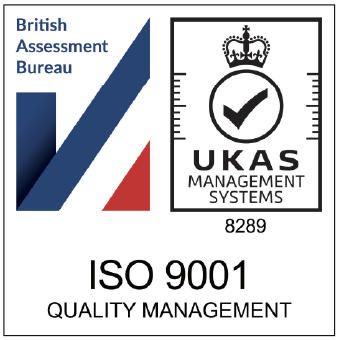If there’s one thing you have to accept when running an eCommerce store, it’s that returns are inevitable.
Even the best products with the smoothest websites don’t achieve a 0% return rate.
But, there is a lot to consider when managing returns. You need to keep an eye on your profitability, plus ensure you have an efficient logistics process in place to prevent stock getting lost, all while keeping your customer service skills in top shape.
Sounds like a lot? Well, the good news is that returns aren’t necessarily a bad thing. While it can be disheartening to make a sale only to have it sent back weeks later, that doesn’t mean you’ve lost that customer – or their money – forever.
In fact, a good returns policy can actually improve customer loyalty, as well as helping you strengthen your business in the long term.
What is the Average Return Rate for eCommerce?
Do you feel like your warehouse is getting swamped by returns? You might find it comforting to know that you probably aren’t alone.
The average return rate for eCommerce is reported to be around 20%, increasing to up to 30% around Christmas. Compare this to traditional brick and mortar stores, who on average see a 8-10% return rate, and it’s easy to see why returns are a pain point for eCommerce stores.
Why exactly is this?
Some more eCommerce return rate statistics might help shed some light…
- 41% of consumers admit to buying multiple items with the intent to return at least one
- However, 96% of people also said that following an easy returns process, they would shop with that retailer again
- In addition, 57% reported that they actually exchanged or replaced the last item they returned rather than being refunded, with 41% doing so from the same retailer
- Furthermore, 69% said they would be put off making a purchase if they had to pay for return shipping
These numbers suggest that customers really do value being able to make quick and easy returns when making an order. It’s understandable, given the fact that they likely won’t actually see, hold or try on their item until they’ve already bought it.
Having a helpful returns policy can give customers the confidence to make their purchases, as well as even boost their loyalty if it goes well.
The question is, how much does it cost in terms of profitability?
How Much Do Returns Cost Retailers?
In the UK, it has been reported that returned items cost retailers £60 billion a year. This comes down to the cost of the ‘reverse logistics’ process. This, according to the same report, sees the average returned item pass through seven pairs of hands before it is ready to be resold.
Based on this, you can see why it is so important to ensure your order fulfilment process is as efficient as possible. The quicker you can get the item from your customer and back into your inventory to resell, the less money you will lose.
Should Your eCommerce Store Offer Free Returns?
So, we have seen how much customers value being able to make returns, but we have also seen how much time and money it can cost you as an online retailer.
There is no denying the fact that offering free returns will cost you more upfront. But, if done correctly, you can start to recoup those losses in terms of customer loyalty.
The pros of offering free returns…
- It can help attract more customers and give them a push to buy from you
- In turn, this can help reduce shopping cart abandonments
- Customers will be more satisfied with their experience if they can easily return an item
- This increases the chance that they will remain loyal in future
The cons of offering free returns…
- It will inevitably add another line of costs to your business
- If you don’t have the right reverse logistics process set up, you may not be able to efficiently cope with returns during busy periods
A Guide to eCommerce Returns Best Practices
Do you think your reverse logistics process could be improved? Consider whether you are following these best practices when managing returns for your eCommerce business to help you stay profitable:
1. Have the right logistics in place
We can’t emphasise enough just how important it is to ensure your fulfilment process is properly set up to manage returns.
There are many steps to consider in this process, such as:
- The customer having easy access to the right returns labels and receipt
- The item being shipped back to the correct area of your warehouse or fulfilment centre without going missing
- The return must be processed and either refunded or exchanged for another item as fast as possible
- The unwanted item should either be recorded as faulty or restocked as available to buy
It is vital that returned items don’t sit unaccounted for in your warehouse. They need to be tracked through your inventory management system so you know exactly how much stock you have. If you don’t, you could end up over-ordering on an item and wasting more money.
Find out more about how important inventory management is to your eCommerce store.
2. Make your returns policy clear
There are two reasons why you must make your returns policy clear on your website:
- Over 60% of customers check a website’s return policy before they make their purchase
- If customers are unaware of your policy, they might get annoyed if they are then faced with additional charges when they want to make a return
Transparency is key to avoiding misunderstandings and disgruntled customers. Outline how they can make a return, the time frame they have to do so and whether they will have to pay the postage for it.
If there are any circumstances under which you would not accept a return, make it clear here. Provide a customer services email address, too, so future customers know they can contact you if needed.
3. Focus on your customer service
There is not much you can do to repair the damage of bad customer service!
Returning an item isn’t the end of the world for the relationship your customer has with your brand. But, if this process goes wrong, it can be hard to win that trust back.
Make sure you communicate with the customer along every step of the returns process. Let them know via email that you have received their item and give them an idea of when they will be refunded or when their new item is dispatched.
Make your contact details clear on your website too – whether you want them to speak to you over email, live chat, a phone call or social media. Have a designated customer service agent who can reply to any messages promptly.
4. Keep an eye on the data
As well as keeping your customer happy, make sure you are also keeping your business healthy.
Always review the data to see how your returns policy is affecting your profitability, especially if you are offering it for free. For example, do people who make more returns actually spend more money in the long term? Or are you being plagued by serial refunders?
Segment these people in your CRM and investigate whether these customers are more profitable, allowing you to confidently justify your free returns policy.
5. Ask yourself why are you getting returns?
Understanding why customers are returning items can offer a well of information to improve your business and website.
Always provide customers with a returns form that asks them for the reason behind their return. This provides a useful insight into areas you can improve your upon.
For example, one of the main reasons clothing is returned is because it doesn’t fit. If this is happening a lot, maybe you could improve your sizing guides, or show the item on different size models? If the customer thought the item wasn’t as described, perhaps you need a better product description or more imagery?
Pay attention to your customer’s feedback and the return rate of each SKU, and you might be able to bring down your return rate.
Are you Offering Free Returns for Your eCommerce Store?
There is a lot that needs to go into properly managing returns when you run an eCommerce store!
But the fact is, returned items are going nowhere, so you need to ensure your business is strong enough to deal with them successfully if you want to see growth.
P.S, do you need help successfully managing your reverse logistics process? Why not contact 3PL for a chat about how third party logistics can make your eCommerce returns easier.
Find more eCommerce business advice on the 3PL blog…
How to Work Out Cost Per Order For Your eCommerce Store | Free Shipping: Should Your eCommerce Store Offer it? | The Key Advantages of Using a Third Party Logistics Provider
Sources:
https://www.emarketer.com/content/retailers-brace-for-returns-this-holiday-season
https://see.narvar.com/rs/249-TEC-877/images/Consumer-Report-Returns-2018-4.3.pdf
https://www.ft.com/content/52d26de8-c0e6-11e5-846f-79b0e3d20eaf
https://v12data.com/blog/50-statistics-about-retail-marketing-and-consumer-shopping-trends/
Speak to 3PL about your order fulfiment
It’s time to supercharge your business and overtake your competitors. Speak to 3PL today and find out how we can take your ecommerce and B2B fulfilment to the next level.


